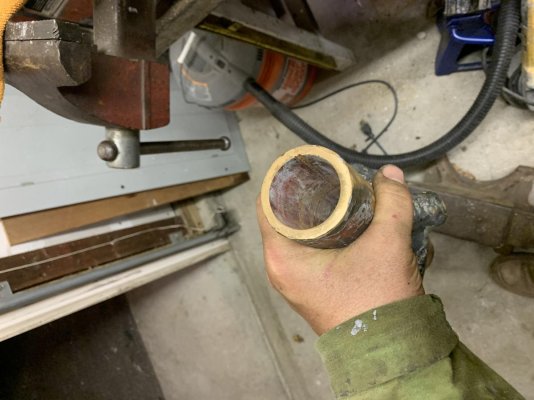angus99
Guru
Had Stella hauled yesterday for a bottom job. Nice to see no blisters and no visible damage—especially after the flotsam we encountered on the Mississippi two years ago.
There is some extremely minor movement—just enough to “click” slightly—when I pull on the shafts. Also, I notice a “ticking” sound from one of the struts while underway. These are long shafts with three cutless bearings on each.
Questions:
—Is any amount of shaft play acceptable?
—Is there a predictive lifespan for cutless bearings?
—Should I just have them changed as preventive maintenance while we’re on land?
One slightly jarring find: the cotter pin and castle nut on the starboard shaft were gone. Not the way I’d have preferred to run the boat over the last 120 miles!
There is some extremely minor movement—just enough to “click” slightly—when I pull on the shafts. Also, I notice a “ticking” sound from one of the struts while underway. These are long shafts with three cutless bearings on each.
Questions:
—Is any amount of shaft play acceptable?
—Is there a predictive lifespan for cutless bearings?
—Should I just have them changed as preventive maintenance while we’re on land?
One slightly jarring find: the cotter pin and castle nut on the starboard shaft were gone. Not the way I’d have preferred to run the boat over the last 120 miles!





